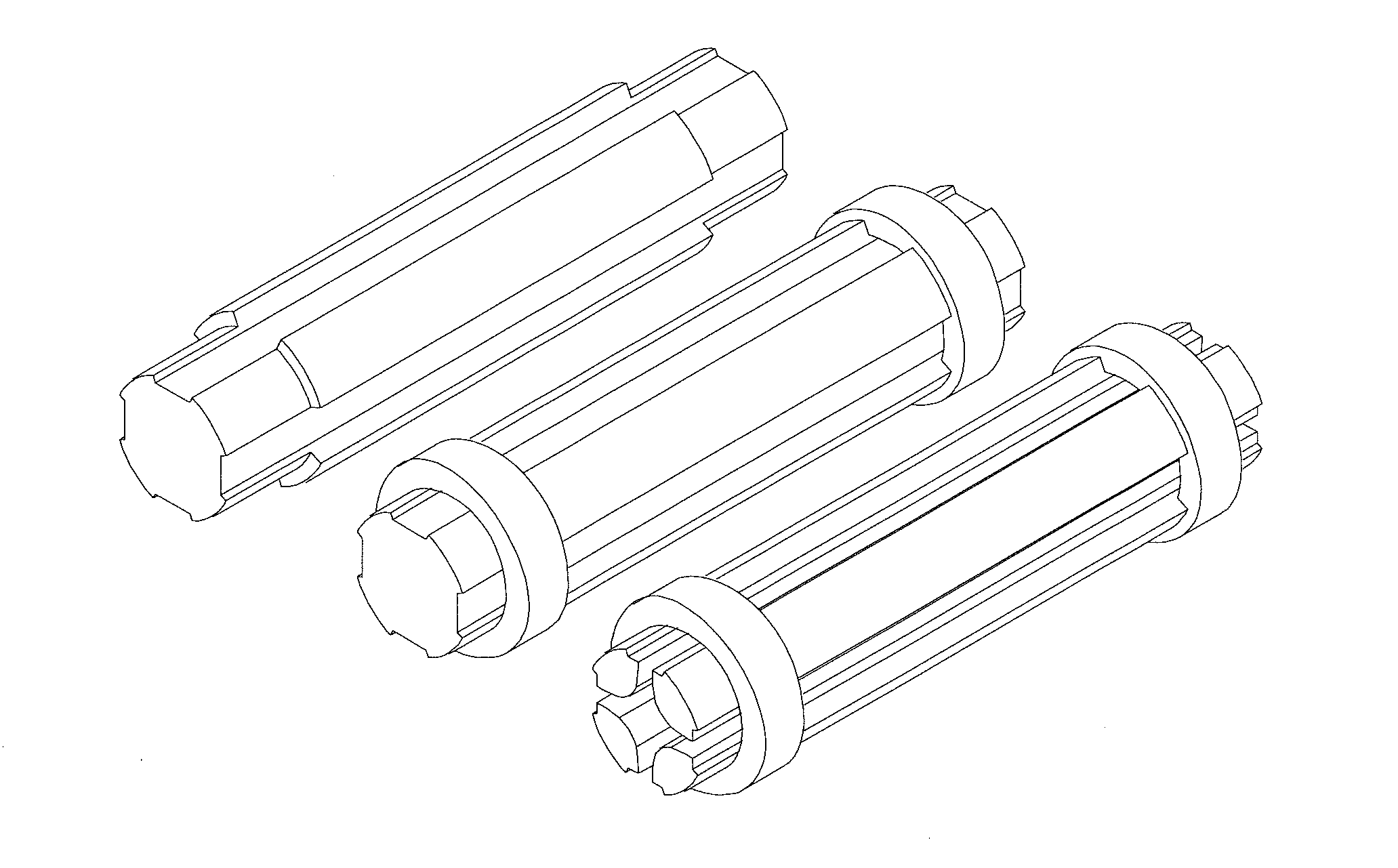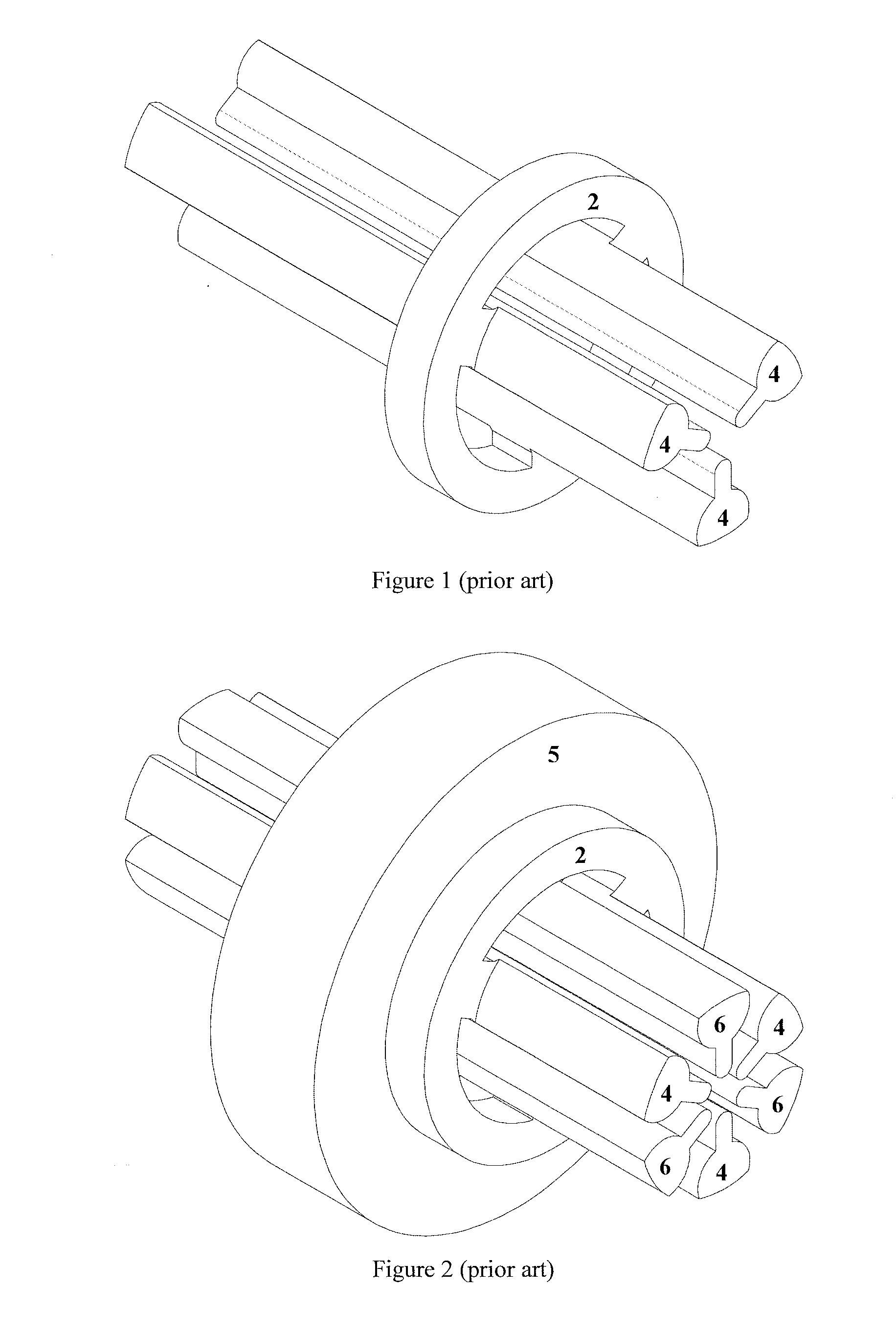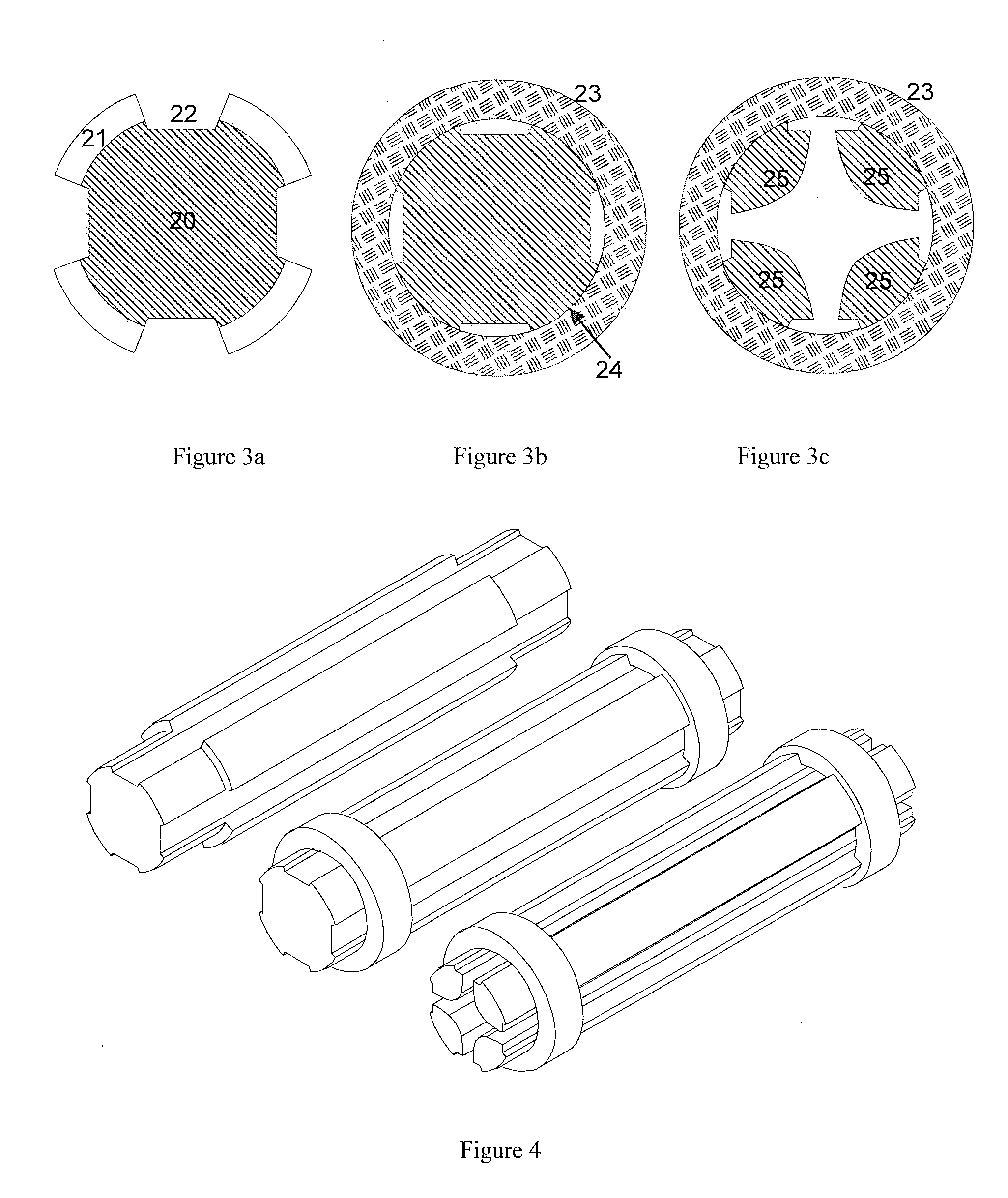Ion spectrometric multipole rod systems made by wire erosion
a multi-pole rod and ion spectrometric technology, applied in the direction of manufacturing tools, welding equipment, arc welding equipment, etc., can solve the problems of unsatisfactory yield of successfully operating quadrupole filters, inability to adjust, and difficult manufacturing methods, etc., to achieve high-precision methods, fabricate precise and smooth surfaces, and facilitate processing
- Summary
- Abstract
- Description
- Claims
- Application Information
AI Technical Summary
Benefits of technology
Problems solved by technology
Method used
Image
Examples
Embodiment Construction
[0022]As described above, an aspect of the invention includes joining the metal parts for the multipole rod system and the matching insulating rings or tubes together to form an effectively inseparable block, for instance by gluing with an adhesive, soldering, brazing or riveting. Then pole rod contours facing are cut toward the axis by wire erosion. The cutting by wire erosion is preferably done for all the pole rods in a single pass, possibly after a preliminary “roughing pass”.
[0023]A method for manufacturing a multipole rod system thus may comprise providing insulating rings or tubes with mating faces for the pole rods, and providing one or more metal parts from which the multipole pole rods can be cut, having mating faces that match the mating faces of the insulating rings or tubes. The metal parts are bonded with the insulating rings or tubes to form a rigid unit, and then contours of the pole rods are cut by wire erosion.
[0024]It is possible, for instance, to braze individual...
PUM
| Property | Measurement | Unit |
|---|---|---|
| diameters | aaaaa | aaaaa |
| diameters | aaaaa | aaaaa |
| diameters | aaaaa | aaaaa |
Abstract
Description
Claims
Application Information
 Login to View More
Login to View More - R&D
- Intellectual Property
- Life Sciences
- Materials
- Tech Scout
- Unparalleled Data Quality
- Higher Quality Content
- 60% Fewer Hallucinations
Browse by: Latest US Patents, China's latest patents, Technical Efficacy Thesaurus, Application Domain, Technology Topic, Popular Technical Reports.
© 2025 PatSnap. All rights reserved.Legal|Privacy policy|Modern Slavery Act Transparency Statement|Sitemap|About US| Contact US: help@patsnap.com



